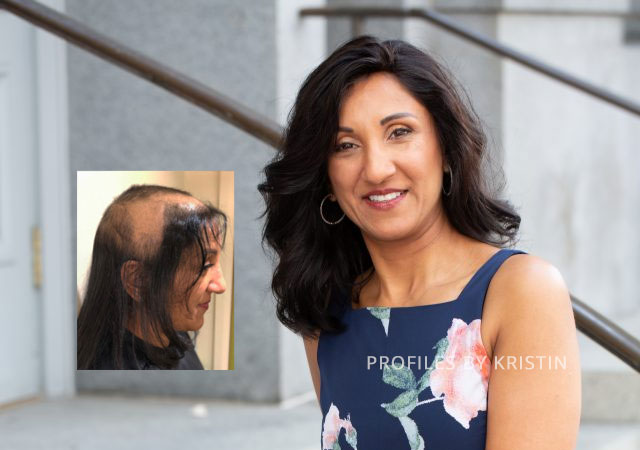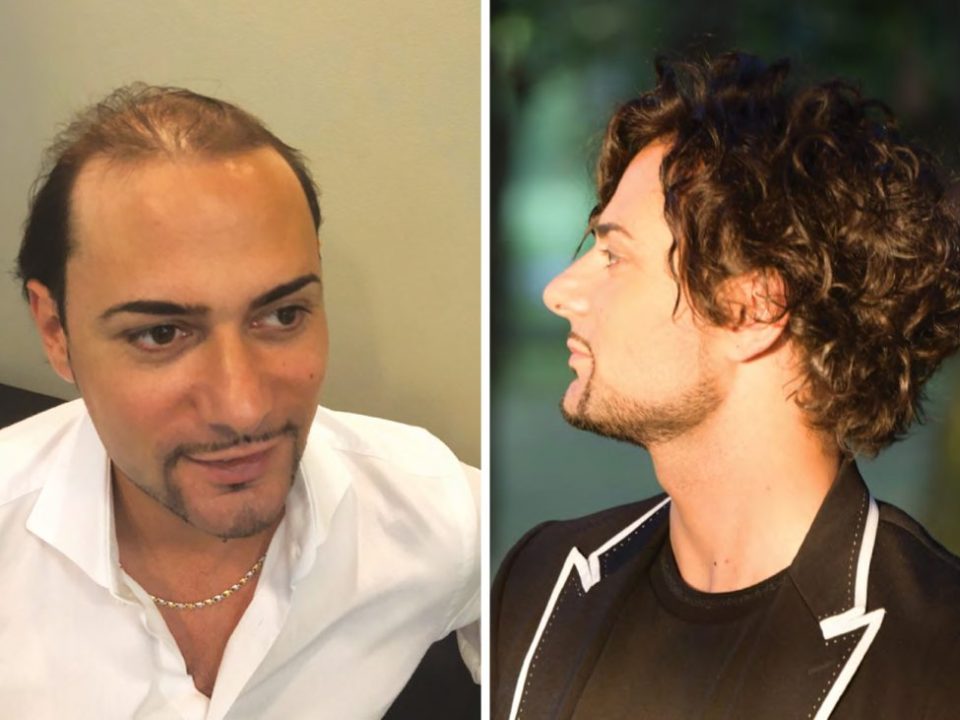Non-Surgical Hair Restoration Popularity

What is Non-Surgical Hair Restoration?
 Non-surgical hair restoration in Syracuse and Central New York has become one of the most popular men’s hair loss solutions in recent years. With advancements in technology and a growing demand for effective, non-invasive treatments, men now have a variety of options to choose from when it comes to addressing their hair loss concerns. In this comprehensive guide, we will explore the different non-surgical hair restoration methods, their pros and cons, and alternative treatments to help you make an informed decision about which solution might be the best fit for your needs.
Non-surgical hair restoration in Syracuse and Central New York has become one of the most popular men’s hair loss solutions in recent years. With advancements in technology and a growing demand for effective, non-invasive treatments, men now have a variety of options to choose from when it comes to addressing their hair loss concerns. In this comprehensive guide, we will explore the different non-surgical hair restoration methods, their pros and cons, and alternative treatments to help you make an informed decision about which solution might be the best fit for your needs.
Non-surgical hair restoration refers to a range of products and procedures that aim to address hair loss without the need for invasive surgery. These methods typically involve the use of hair replacement systems, scalp micropigmentation, and FDA-approved medications to either conceal or stimulate hair growth in areas affected by male pattern baldness.
There are two main types of non-surgical hair restoration:
- Hair replacement systems: These are essentially high-quality hairpieces or toupees that are designed to look and feel like natural hair. They can be customized to match the individual’s hair color, texture, and style, providing a natural-looking solution to hair loss. In recent years they have also been called a hairpatch.
- Scalp micropigmentation: This is a non-surgical procedure that involves the application of tiny, tattooed dots on the scalp to create the appearance of thicker hair. While it does not replace lost hair, it can effectively camouflage thinning areas and create the illusion of a fuller head of hair.
In addition to these methods, non-surgical hair restoration also includes the use of FDA-approved medications, such as finasteride and minoxidil, which have been proven to slow down hair loss and promote hair regrowth in men with male pattern baldness.
Hair Replacement Systems
Hair replacement systems are a popular non-surgical hair restoration option for men experiencing hair loss. They offer a range of benefits, including affordability, convenience, and instant results. In this section, we will delve into the different types of hair replacement systems, their advantages and disadvantages, and tips for choosing the right system for your needs.
Types of Hair Replacement Systems
There are several types of hair replacement systems available on the market, ranging from off-the-shelf products to fully customized solutions. The main types include:
- Stock systems: These are pre-made hairpieces that come in a variety of styles, colors, and materials. They can be made from synthetic fibers or human hair and usually feature a polyurethane base that adheres to the scalp. Stock systems are generally less expensive than customized options but may not provide the most natural-looking results.
- Customized hair replacement systems: These hair replacement systems are designed specifically to exactly match the individual’s hair color, texture, style, and head shape, ensuring a much more natural and seamless appearance. Customized systems can be made from human hair or high-quality synthetic fibers and may feature different types of bases, such as lace, monofilament, or skin-like materials. They quite often cannot be visibly detected even at extremely close range since they look so natural.
Advantages of Hair Replacement Systems
Some of the key advantages of hair replacement systems include:
- Cost-effective: Compared to surgical hair restoration procedures, hair replacement systems are generally more affordable, making them an attractive option for those on a budget.
- Convenience: Hair replacement systems can be easily fitted and removed, allowing the user to switch between different styles and colors as desired. There is also no recovery time or post-procedure care required, unlike surgical hair restoration methods.
- Instant results: Hair replacement systems provide immediate results, giving the appearance of a full head of hair as soon as they are applied. This can be a significant confidence boost for those dealing with hair loss.
- An overall increase in hair density and thickness, along with the ability to color and style your new hair in any way you want.
Scalp Micropigmentation
Scalp micropigmentation (SMP) is another popular non-surgical hair restoration option that involves the application of tiny, tattooed dots on the scalp. This technique can be used to cover thinning areas, create the illusion of a fuller head of hair, and even camouflage scars from hair transplant surgery.
Advantages of Scalp Micropigmentation
Some of the key benefits of scalp micropigmentation include:
- Non-surgical: As a non-invasive procedure, SMP does not involve any incisions or sutures, reducing the risk of complications and eliminating the need for a lengthy recovery period.
- Low maintenance: Once the SMP treatment is complete, there is typically no ongoing maintenance required, making it a convenient option for those seeking a long-lasting solution to hair loss.
- Natural-looking results: When performed by a skilled practitioner, SMP can produce natural-looking results that blend seamlessly with the surrounding hair and scalp.
However, there are also some downsides to consider when it comes to scalp micropigmentation:
- Unnatural appearance: If the SMP treatment is not performed correctly or on a scalp with little to no remaining hair, the results may appear unnatural or tattoo-like.
- Color changes: Early in the evolution of scalp micropigmentation, the pigments used were of not sufficient quality or type, causing SMP procedures to fade or change color, potentially resulting in an inconsistent or unnatural appearance. These difficulties have largely been overcome in recent years. It is also important to know, in this regard, that the inks used in scalp micropigmentation are far different from those used in traditional tattoos, and are applied in an entirely different type of procedure.
- Cost: While generally less expensive than hair transplant surgery, SMP can still be a costly procedure, with prices ranging from 5,000, depending on the extent of treatment required.
Benefits of Non-Surgical Hair Restoration
Non-surgical hair restoration offers several advantages over traditional surgical methods, including lower costs, faster results, and a reduced risk of complications. Some of the main benefits include:
- Affordability: Non-surgical hair restoration options, such as hair replacement systems and scalp micropigmentation, are generally more affordable than hair transplant surgery, making them more accessible to a wider range of individuals.
- Immediate results: Unlike medications and surgical treatments, which can take months to produce visible results, non-surgical hair restoration methods offer instant improvements in the appearance of the hair and scalp.
- No downtime: Non-surgical hair restoration procedures do not require any recovery time, allowing users to continue with their daily routines without interruption.
- Customizable: Hair replacement systems can be tailored to match the individual’s hair color, texture, and style, ensuring a seamless and natural-looking result.
Other Options for Treating Hair Loss
While non-surgical hair restoration methods can be effective in addressing hair loss, it’s important to note that they do not actually treat the underlying causes of hair loss or promote the regrowth of lost hair. For those seeking a more comprehensive solution, FDA-approved medications and surgical hair restoration procedures may be worth considering.
FDA-Approved Hair Loss Medications
Currently, there are two FDA-approved medications for the treatment of hair loss: finasteride (available as a generic medication or under the brand name Propecia®), and minoxidil (sold as a generic drug or under the brand name Rogaine®). Both medications have been shown to effectively slow hair loss and promote hair regrowth when used consistently.
- Finasteride: This oral medication works by blocking the conversion of testosterone into dihydrotestosterone (DHT), the hormone responsible for male pattern hair loss. Studies have shown that finasteride can reduce DHT levels by up to 70%, leading to significant improvements in hair regrowth for many users.
- Minoxidil: This topical medication is believed to stimulate hair growth by increasing blood flow to the scalp and promoting the growth phase of the hair cycle. Research has demonstrated that minoxidil can be particularly effective when used in combination with finasteride, with one study showing that 94.1% of men treated with both medications experienced improvements in hair growth.
Hair Transplant Surgery
For those with significant hair loss, hair transplant surgery may be an effective option for restoring a full head of hair. This surgical procedure involves moving hair follicles from the back and sides of the scalp (areas resistant to DHT) to the hairline, crown, or other areas affected by hair loss. While hair transplant surgery does not technically replace lost hair, it can have a significant positive impact on the individual’s appearance and self-confidence.
Is Non-Surgical Hair Restoration Right for You?
The decision to pursue non-surgical hair restoration ultimately depends on your individual needs, preferences, and budget. While hair replacement systems and scalp micropigmentation offer a range of advantages, it’s important to weigh these against the potential drawbacks, such as ongoing maintenance and costs. Additionally, non-surgical methods may not be suitable for those seeking a more comprehensive solution to hair loss, as they do not actually treat the underlying causes or promote hair regrowth.
Non-surgical hair restoration methods offer a range of benefits for those seeking a cost-effective, convenient, and low-risk solution to hair loss. By considering the various options available and consulting with a specialist, you can make an informed decision about the best course of action for addressing your hair loss concerns.
If you’re interested in exploring non-surgical hair restoration options, we invite you to schedule a complimentary, private consultation with one of our professional hair loss specialists to discuss your specific concerns and determine the best course of action for you.



